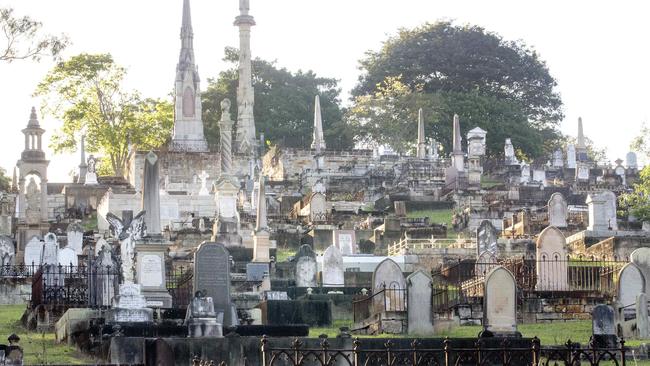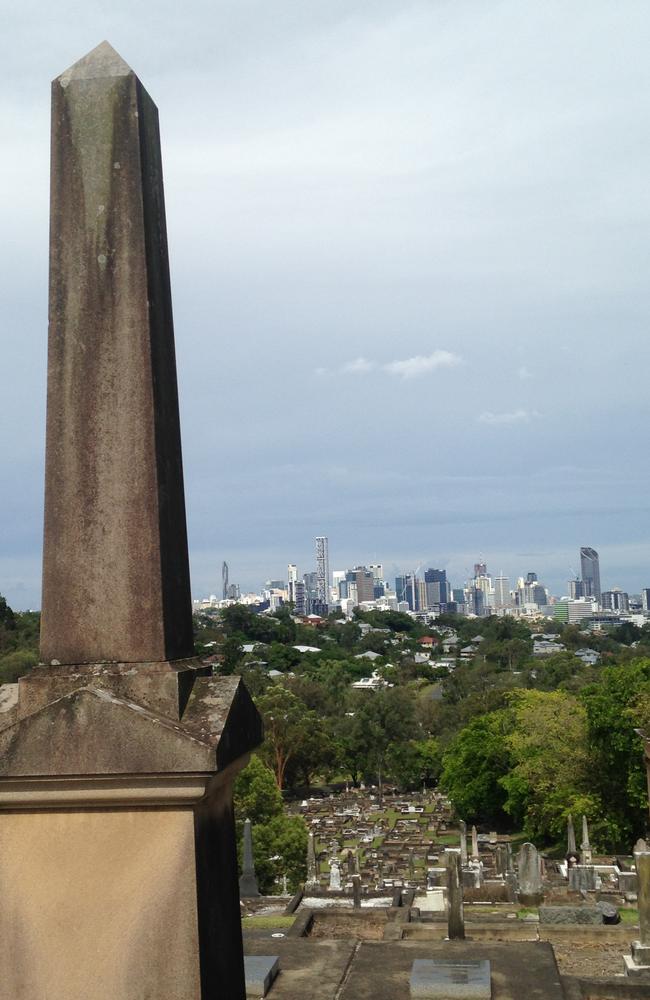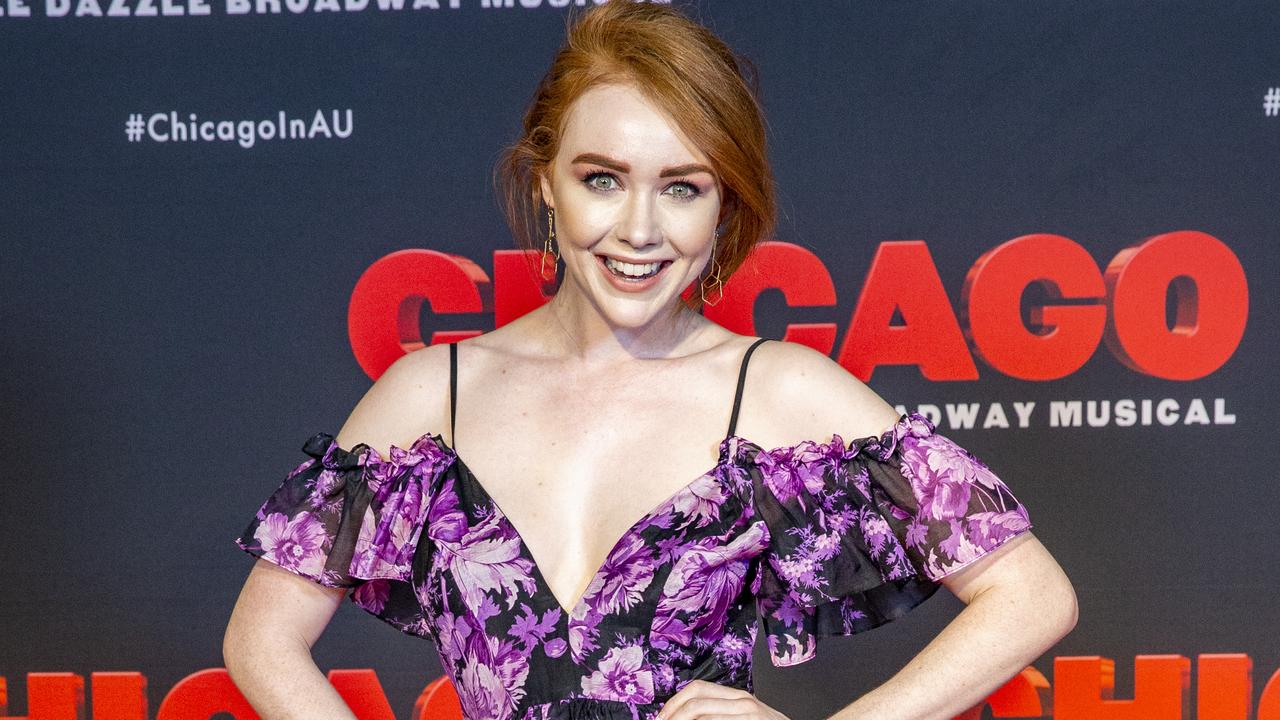Kathleen Noonan finds her Joe and he’s got an amazing resting place
Visiting a modern cemetery, all manicured grass and order, is one thing. Popping into an historic cemetery is quite another.
QWeekend
Don't miss out on the headlines from QWeekend. Followed categories will be added to My News.
The graveyard is not entirely quiet. This day, the magpies and crows are creating a racket and I’m grateful to the black-and-white buggers. Makes the place seem less, well, dead.
Earlier, in Brisbane’s inner-west Toowong, I catch a glimpse of the cemetery while driving by and turn in on the off chance I can track down the grave of a distant relative.
I have a map in my bag, so park and head up the hill, following the road and portion numbers, past humble and extravagant graves, those of men who died in distant wars, past huge family crypts and graves of young wives diverted here during childbirth. There’s a former PM here, premiers, cricket captains and crims. A mixed bag.

Blooming frangipanis and camphor laurels and large gums give this heritage-listed cemetery shade and gravitas.
It’s a calm, reassuring place. Still up and up I climb, past higgledy-piggledy broken-tooth gravestones.
Visiting a modern cemetery, all manicured grass and order, is one thing. Popping into an historic cemetery is quite another. Graves have collapsed, monuments tumbled, tenacious fig roots taken over graves.
WHY LIME SCOOTERS ARE A LAWYER’S DREAM
All around is stone, marble, grass and huge trees, 44 hectares of 117,000 souls, one big, connected organism – above and below ground. Well, it is, isn’t it?
Hanging out in a cemetery does not freak me out. As a journo, it’s hard not to find them fascinating. There’s a story in every epitaph – an antique form of Twitter. (Though hopefully more profound.)
I once interviewed an Australian Army graves historian in Canberra who said on family holidays he took his kids on multiple cemetery visits.
“My young daughter even fell into a freshly dug grave one day, as the family tramped on obliviously. It’s a great family story,” he said, laughing his head off.
In the UK last month, the remains of Matthew Flinders, the first explorer to circumnavigate Australia, were rediscovered after 200 years in a graveyard being excavated to make way for the high-speed rail link between London and Birmingham.
All up, 40,000 bodies are being exhumed, all for a train line.
Some people don’t like cemeteries. Yet I reckon they are a reverent mix of nature, story and history.
A few years ago, I dragged a mate on a run along eastern Sydney’s beach cliffs, and then diverted into the spectacular Waverley cemetery to check on my entrepreneurial great-grandparents. What a piece of real estate. The sky, the breeze, the beaches.
This time, I’ve come to Toowong to look for the grave of a great-uncle who died before I was born. Old cemeteries are notoriously tricky to navigate, even for the spatially savvy.
They tend to defy logic. Further up the steep slope I climb, take a slight left, then stop, to get my bearings. Must be close, yet where in this chaos?

Then, a row in, there’s his name, Joe, on a simple, grey headstone. Unpretentious. Solid. Joe.
I’ve heard him described as a decent, kind, considerate man, a good cricketer, played piano, liked brass bands, was in the business of pubs, among other things. (There are publicans sprinkled throughout the family tree, which explains much.)
I introduce myself, saying his name out loud in this hushed place. Eventually, I turn and realise Joe has a humdinger of a city view with a huge, grey gum to the side and CBD towers laid out in front of him.
My father spoke of this man with affection and, deep down, that’s why I’m here today.
I ring him to report that humble, unassuming Joe has soaring city views, and looks down the slope over a few Supreme Court Justices.
A deep chuckle comes down the line. Drilled into my family has always been the notion you had to “do the right thing” by your ancestors, and that meant taking care of their graves. People are happy to inherit the dough, house or gold fob watch from great grandad, yet leave his grave untended, or worse, unmarked.
Graveyards remind us we are worm food ultimately, and as a farmgirl, the idea of composting the planet appeals.
All we can do is leave behind love, in all its manifestations. It’s as simple and difficult as that. I feel a strange, life-affirming burst of optimism and energy.
There is a certain frame of mind, wrote Robert Louis Stevenson, to which a cemetery is, if not an antidote, at least an alleviation. If you’re in a fit of the blues, go nowhere else.
Yet graveyards are no places for morbid thoughts. Bars are best for contemplating eternity, so as the light starts to slide, I say, “See you, Joe. I’ll come again”, and, in honour of all the ancestors, head off for a drink.
Half an hour later, settling into a booth at a bar, a mate asks, how’s your day? Hmm. I think of Shakespeare’s Richard II: “Let’s talk of graves, of worms, and epitaphs; Make dust our paper and with rainy eyes / Write sorrow on the bosom of the Earth; / Let’s choose executors and talk of wills”.
Nah, not now. I’m in the mood for living. The barman hovers for orders. Let’s choose whisky and talk of tomorrow’s plans.
noonanslastword@gmail.com


